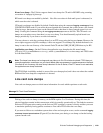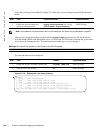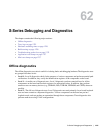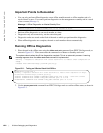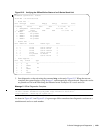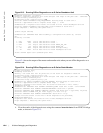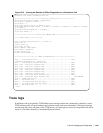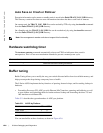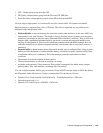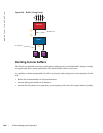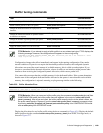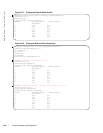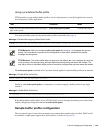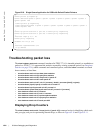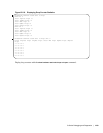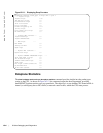S-Series Debugging and Diagnostics | 1227
1. CSF – Output queues going from the CSF.
2. FP Uplink—Output queues going from the FP to the CSF IDP links.
3. Front-End Link—Output queues going from the FP to the front-end PHY.
All ports support eight queues, 4 for data traffic and 4 for control traffic. All 8 queues are tunable.
Physical memory is organized into cells of 128 bytes. The cells are organized into two buffer pools—
dedicated buffer and dynamic buffer.
• Dedicated buffer is reserved memory that cannot be used by other interfaces on the same ASIC or by
other queues on the same interface. This buffer is always allocated, and no dynamic recarving takes
place based on changes in interface status. Dedicated buffers introduce a trade-off. They provide each
interface with a guaranteed minimum buffer to prevent an overused and congested interface from
starving all other interfaces. However, this minimum guarantee means the buffer manager does not
reallocate the buffer to an adjacent congested interface, which means that in some cases, memory is
underused.
• Dynamic buffer is shared memory that is allocated as needed, up to a configured limit. Using dynamic
buffers provides the benefit of statistical buffer sharing. An interface requests dynamic buffers when
its dedicated buffer pool is exhausted. The buffer manager grants the request based on three
conditions:
• The number of used and available dynamic buffers
• The maximum number of cells that an interface can occupy
• Available packet pointers (2k per interface). Each packet is managed in the buffer using a unique
packet pointer. Thus, each interface can manage up to 2k packets.
You can configure dynamic buffers per port on both 1G and 10G FPs and per queue on CSFs. By default,
the FP dynamic buffer allocation is 10 times oversubscribed. For the 48-port 1G card:
• Dynamic Pool= Total Available Pool(16384 cells) – Total Dedicated Pool = 5904 cells
• Oversubscription ratio = 10
• Dynamic Cell Limit Per port = 59040/29 = 2036 cells



